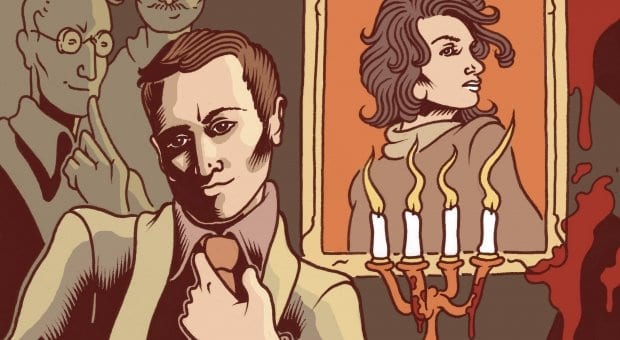I have something in common with murderer Wayne Lonergan. In 1943 he perpetrated a crime so riveting that it pulled international attention away from the Second World War. Because the details of the case were like the tawdriest of fiction, people thought of it as entertainment, a welcome diversion from seemingly never-ending war. When life starts behaving like fiction, people treat it as fiction. There are chapters of my life that were like that; I’ve always felt like a bit of a fraud telling people things like “I left home when I was 16 and lived with a drug smuggler for two years.” Those were hard years, but it’s almost too movielike for most people to believe, or if they do believe it, it still doesn’t seem real somehow. Similar to this is Lonergan’s own tragic story — a cheesy, overblown murder mystery almost impossible to regard without amusement.
In the summer of 1939, the 21-year-old Lonergan, a Torontonian from a modest background, went down to New York City looking for adventure. He got a job as a “chair boy,” pulling wealthy people around on rickshaws from exhibit to exhibit at the World’s Fair in Flushing Meadows. That’s how he met millionaire William Burton, whose family had gotten rich selling beer in the years between 1850 and the 1940s. Burton became Lonergan’s sugar daddy.
Burton died a year later but not before introducing Lonergan to his daughter, Patricia. Perhaps at William’s urging, Lonergan and Patricia married in Las Vegas in 1941. Their son was born about seven months later. The couple lived a wild life; she spent her nights with handsome men in New York nightclubs and he continued to spend time with wealthy male “patrons.”
Two years into their marriage, Patricia decided to cut Lonergan out of her will and was probably filing for separation. In a huff, Lonergan tried to join the US army but was rejected on the grounds that he was a homosexual. He returned to Canada to try his luck with our military and became a Royal Canadian Air Force cadet in 1943.
On Oct 23, 1943, Lonergan flew back to NYC to visit his son. At 8am the next day, he visited his wife at her posh Beekman Hill residence (incidentally, Beekman Hill previously had been the site of several other high-society murders). She had just returned home from a night out with one of her close male companions at the Stork Club. They started arguing, naked for some reason (they may have been fucking at first), then he killed her by choking her and clobbering her on the head with a silver candelabra. Though his motive for the murder is not totally clear, he later said she’d inflicted “great physical pain” on him. It’s unclear what this meant, but it was rumoured she’d cut or bitten off some or all of his penis.
As the highly publicized trial began and the whole sordid tale came out, people started to blame the couple’s behaviour on the decadence of their class. The Journal-American said that “possessed of too much money, jaded by normal activities, they turn to the unnatural for diversion.” The same journal then published an article describing two types of homosexuals, “moral lepers” and “sex inverts.”
It’s so much like fiction that it was part of the inspiration for Kenneth Fearing’s 1946 novel The Big Clock, which was subsequently made into a film noir thriller of the same name starring Ray Milland and Charles Laughton.
Lonergan was convicted of second degree murder and served 22 years before being paroled and eventually sent back to Canada in the 1960s. He then started a relationship with Canadian actress Barbara Hamilton, whose roles included Eulalie Bugle on Road to Avonlea from 1992 to 1996. Possessed of a wacky sense of humour, her nickname for Lonergan was “Killer.” So, if you encountered her at a party, she might ask, “Oh, have you met Killer?” Then she’d wave over a still-handsome, middle-aged man with “Killer, come meet these people!”
Lonergan died in Toronto of cancer in 1986. He was 67.
(History Boys appears on Daily Xtra on the first and third Tuesday of every month. You can
also follow them on Facebook.)


 Why you can trust Xtra
Why you can trust Xtra


